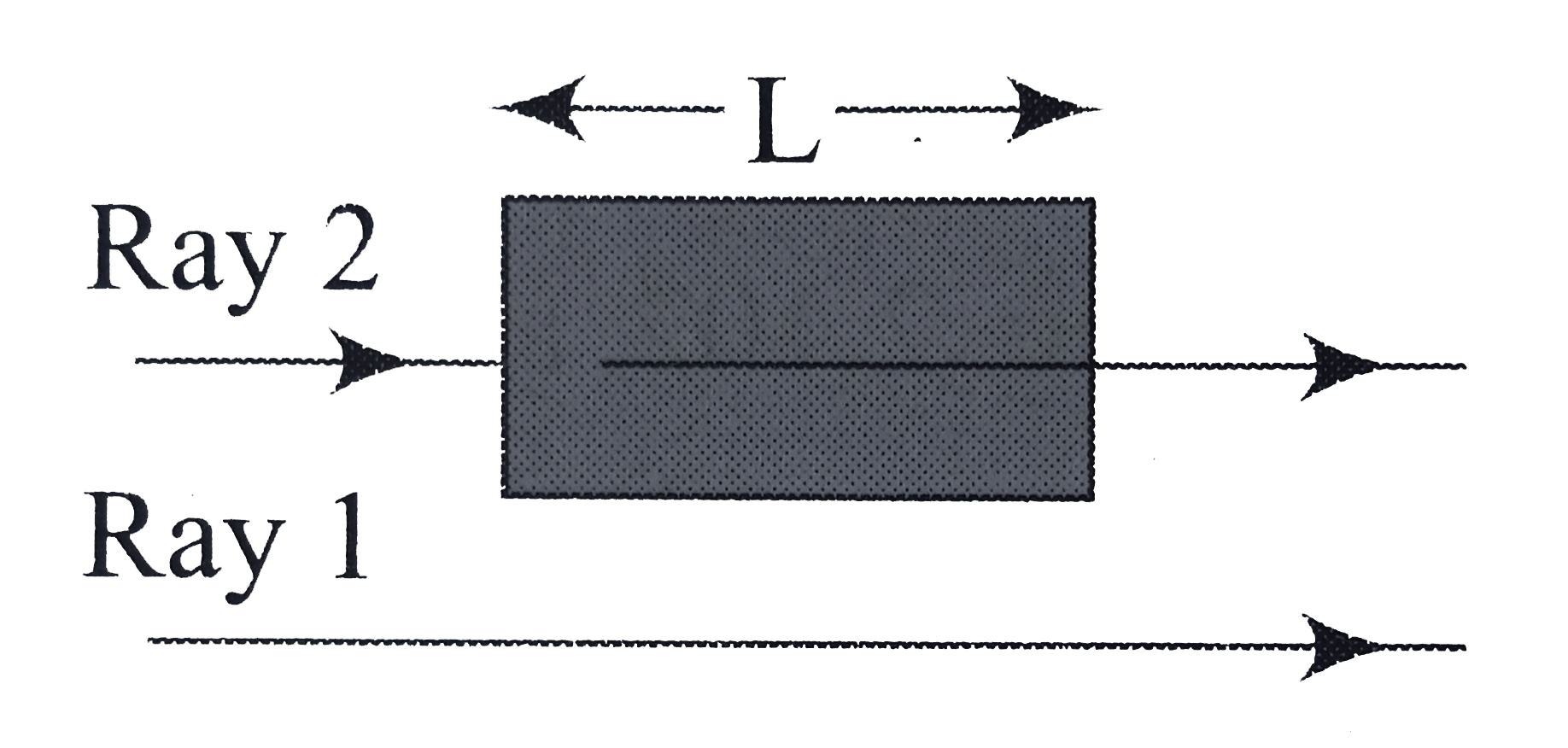Plane polarised light is passed through a polaroid. On viewing through the polaroid we find that when the polaroid is given one complete rotation about the direction of lightSolution in Gujrati
The intensity of light gradually decreases to zero and remains at zero
The intensity of light gradually increases to a maximum and remains at maximum
There is not change in intensity
The intensity of light is twice maximum and twice zero
The correct Answer is:D
Step by step video & image solution for Plane polarised light is passed through a polaroid. On viewing through the polaroid we find that when the polaroid is given one complete rotation about the direction of light by Physics experts to help you in doubts & scoring excellent marks in Class 12 exams.
Updated on:21/07/2023Topper's Solved these Questions
- WAVE OPTICSBOOK - ALLEN CHAPTER - WAVE OPTICSEXERCISE - Exercise 2 (Brain Teasures)
22 Videos
- WAVE OPTICSBOOK - ALLEN CHAPTER - WAVE OPTICSEXERCISE - Exercise 3 (Miscellaneous type Questions)
27 Videos
- WAVE OPTICSBOOK - ALLEN CHAPTER - WAVE OPTICSEXERCISE - Example 15
1 Videos
- UNIT & DIMENSIONS, BASIC MATHS AND VECTOR BOOK - ALLEN CHAPTER - UNIT & DIMENSIONS, BASIC MATHS AND VECTOR EXERCISE - Exercise (J-A)
7 Videos
Similar Questions
As shown in figure waves with identical wavelengths and amplitudes and which are intially in phase travel through difference media. Ray 1 travels through air and Ray 2 through a transparent medium for equal length L, in four different situations. Rays reach a common point on the screen. The number of wavelengths in length L is N2 for Ray 2 and N1 for Ray 1. In the following table, values of N1 and N2 are given for all four situations. The order or the situations according to the intensity of the light at the common point in descending order is Situations
1 2 3 4
N1 2.75 1.80 3.00 3.25
N2 2.75 2.80 3.25 4.00

View SolutionStatement-1: if white light is used in YDSE, then the central bright fringe will be white.
Statement-2: In case of white light used in YDSE all the wavelengths produce their zero order maxima at the same position.
View Solution_S01_033_Q01.png)
In a typical young's double slit experiment a point source of monochromatic light is kept as shown in the figure. If the source is given an instantaneous velocity v=1 mm per second towards the screen, then the instantaneous velocity of central maxima is given as α×10−βcm/s upward in scientific notation find the value of α+β
View SolutionMatch List I with List II and select the correct answer using the codes given below the lists :

View SolutionA polaroid is placed at 45∘ to an incoming light of intensity I0. Now the intensity of light passing through polaroid after polarisation would be
View SolutionA polaroid is placed at 45∘ to an incoming light of intensity I0. Now the intensity of light passing through polaroid after polarisation would be
View SolutionWhen a given light beam is passed through a polaroid and polaoid is rotated about the incident light axis, what are the three possiblities ?
View SolutionA partially plane polarised beam of light is passes thorugh a polaroid. Show graphically the variation of transmitted light with angle of rotation of polaroid.
View SolutionPlane polarised light is passed through a polaroid. On viewing through the polaroid we find that when the polaroid is given one complete rotation about the direction of light
View SolutionA beam of light incident on a polaroid and the polaroid is rotated through 360^(@) , about the direction of the incident beam as the axis. If there is no change in the intesity of the transmitted light then the incident light may be
View SolutionUnpolarized light of intensity l_0 is incident on a set of 3 polaroids as shown. The pass axis of each polaroid is perpendicular to direction of propagation. One of the polaroid is rotated about the common direction of propagation of light.
View Solutionएक आंशिक रूप से समतल ध्रुवित प्रकाश की बीम, एक पोलरॉइड में से गुजारी जाती है। संचरित प्रकाश तीव्रता के पोलरॉइड के घूर्णन कोण के साथ परिवर्तन को ग्राफ से दिखाए।
View Solution(a) When an unpolarised light of intensity I0 is passed through a polaroid, what is the intensity of the linearly polarised light ? Does it depend on the orientation of the polaroid ? Explain your answer.
(b) A plane polarised beam of light is passed through a polaroid. show graphically the variation of the intensity of the transmitted light with angle of rotation of the polaroid in complete one rotation.
View SolutionPlane polarised light is passed through a polaroid. On viewing through the polaroid we find that when the polaroid is given one complete rotation about the direction of light
View SolutionA polaroid is placed at 45^@ to an incoming light of intensity I_0 . Find the intensity of light passing through polaroid after polarisation.
View Solution
